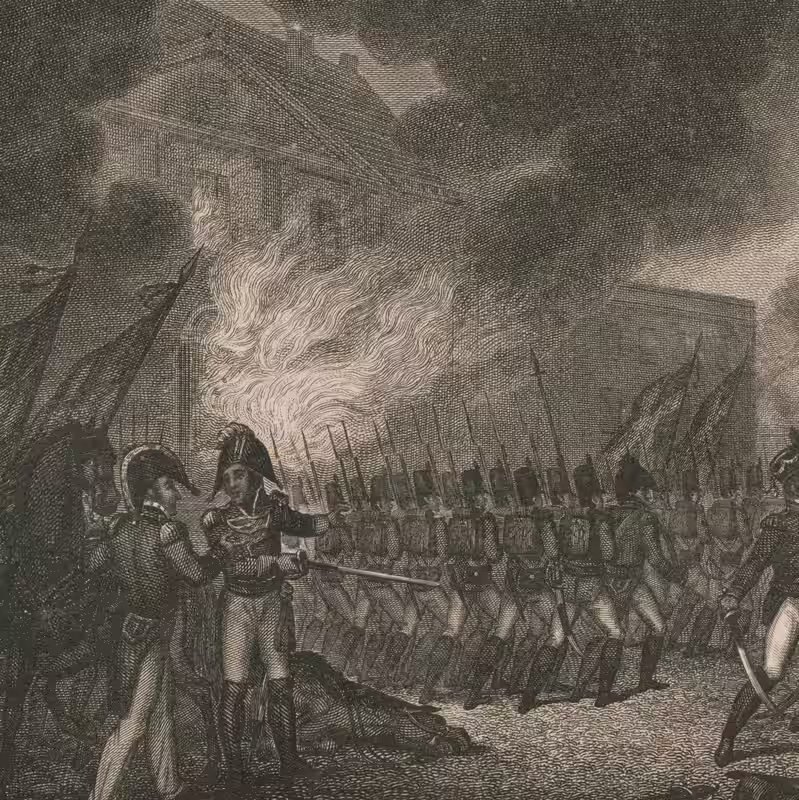Table of Contents
- Trump’s National Guard Deployment Sparks Legal Battle
- The Gray Mare Precedent: Martin v. Mott (1827)
- Why This Old Case Matters Today
- Conflicting Interpretations from Courts
- Illinois vs. Trump Administration: The Facts
- Broader Implications for Presidential Power
- Sources
200-Year-Old Horse Case Could Decide Trump’s Troop Move
In a high-stakes legal showdown over presidential authority, the Trump administration is leaning heavily on a 19th-century Supreme Court case involving the seizure of a “gray mare” to justify deploying National Guard troops outside a Chicago-area immigration facility.
The case—Martin v. Mott (1827)—is now at the center of a fierce constitutional debate: Can a president unilaterally federalize the National Guard during domestic unrest, or must courts and states have a say?

The Gray Mare Precedent: Martin v. Mott (1827)
The obscure case began during the War of 1812, when President James Madison called up the New York militia to defend against British invasion. Jacob Mott, a militiaman, refused to report for duty and was fined. Authorities seized his mare—some say a horse, others a mule—to cover the debt.
Mott sued, arguing Madison lacked authority to federalize the militia without clear proof of invasion. The Supreme Court unanimously ruled against him, with Justice Joseph Story writing: “The authority to decide whether the exigency has arisen belongs exclusively to the president, and that his decision is conclusive upon all other persons.”
Why This Old Case Matters Today
Trump’s solicitor general, D. John Sauer, has cited Martin v. Mott 19 times in court filings, arguing it bars judges from second-guessing the president’s judgment on military deployments—even domestically.
“Nothing about the rationale of this court’s decision turned on or was limited to those particular facts,” Sauer wrote, insisting the precedent applies equally to 2025 Chicago as it did to 1814 New York.
Conflicting Interpretations from Courts
Federal judges aren’t convinced. A unanimous Seventh Circuit panel—including a Trump appointee—rejected the administration’s broad reading, noting key differences: Mott was a subordinate soldier challenging orders, not a state government contesting federal overreach.
“The nation was then at war with the most powerful empire on earth,” the court wrote. “That empire had actually invaded the United States and was sacking its capital city.”
By contrast, protests outside the Broadview ICE facility have involved fewer than 50 people and remained largely peaceful, according to Illinois officials.
| Issue | Trump Administration Claim | Court & State Response |
|---|---|---|
| Nature of unrest | “Rebellion” and “preplanned ambushes” | “Peaceful protests with minor civil disobedience” |
| Legal basis | Martin v. Mott grants unchecked power | Case applies only to military subordinates, not states |
| Presidential authority | Exclusive and conclusive | Subject to judicial review in domestic contexts |
Illinois vs. Trump Administration: The Facts
Illinois Attorney General Kwame Raoul called the comparison “absurd,” noting that Mott was a delinquent militiaman—not an elected state official defending sovereignty.
“A sovereign state’s challenge to an imminent domestic deployment within its borders over its governor’s objection is worlds apart from a court-martial dispute over a mare,” Raoul wrote.
Lower courts have found federal agents were never truly unable to enforce laws—vehicles entered the ICE facility daily, and arrests continued without interruption.
Broader Implications for Presidential Power
Legal scholars warn that accepting the Trump administration’s interpretation could set a dangerous precedent, effectively allowing any president to deploy troops domestically under vague claims of “rebellion” or “lawlessness.”
“Political opposition is not rebellion,” the Seventh Circuit bluntly stated. “A protest does not become a rebellion merely because protesters advocate for policy changes or carry firearms legally.”
The Supreme Court is expected to rule soon on whether to allow the deployment to proceed while litigation continues—a decision that could reshape the balance of power between federal and state governments for generations.




